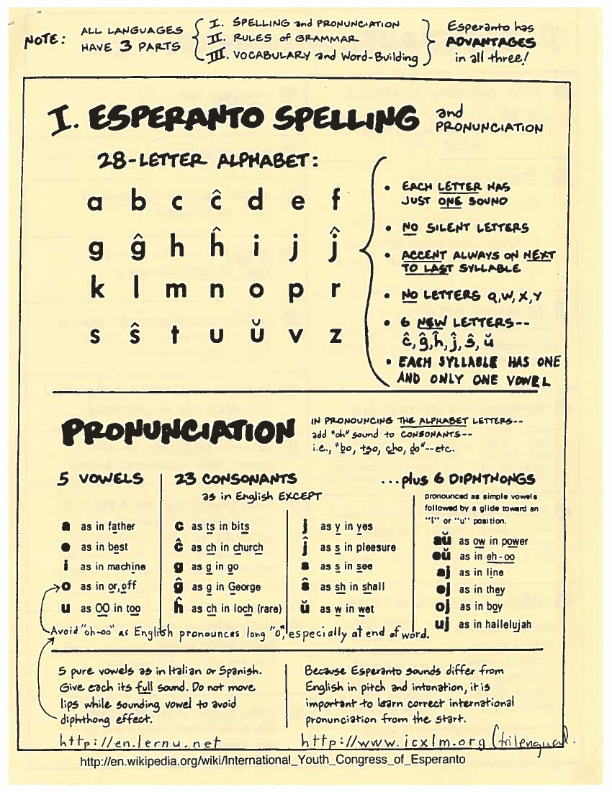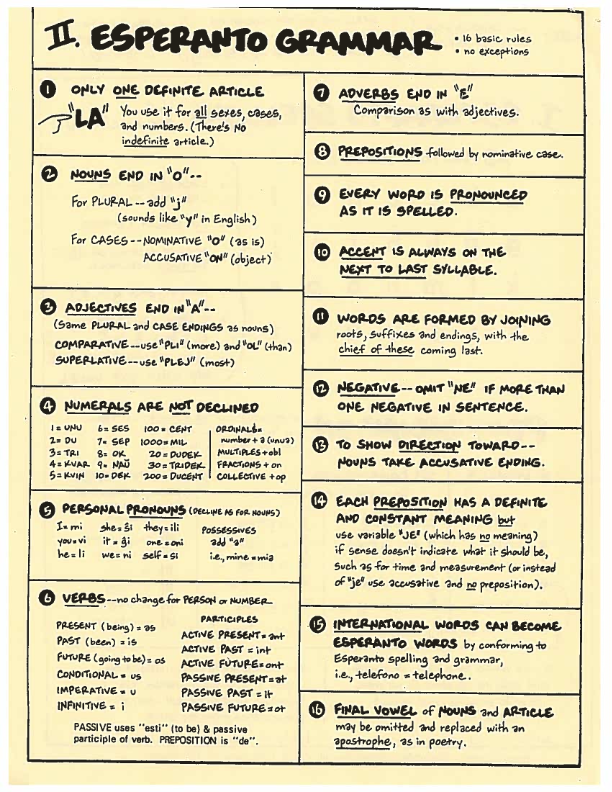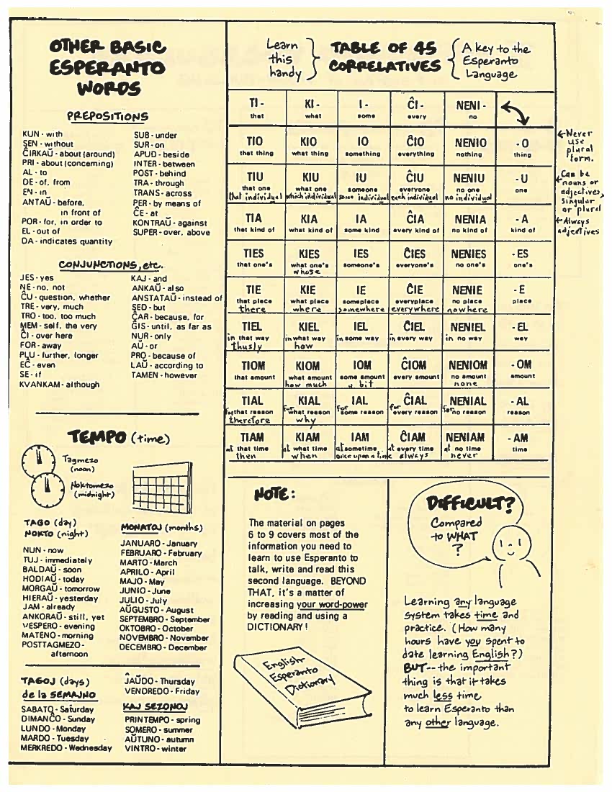By: Marla Borkson
The Harris Institute recently hosted Professor Ronald Glossop to give a presentation on Esperanto. Esperanto, created by Polish Physician Ludwig Lazarus Zamenhof in the late 1800’s, was crafted as a neutral global language to facilitate communication between the Poles, the Russians, the Germans, and the Jews, who were often quarreling with one another. Many of the root words in Esperanto are based on Latin, but other words come from languages such as French, English, and German, as well as Russian, Polish, Yiddish, Lithuanian, and ancient Greek. The national language which is most similar to Esperanto is Italian.
Professor Glossop, Professor Emeritus at Southern Illinois University- Edwardsville, is the President of the American Association of Teachers of Esperanto, and Director of Infanoy chirkaw la Mondo or Esperanto for “Children around the World“. He became interested in Esperanto when hypothesizing what would make war less likely. According to Professor Glossop, “I want to be a world citizen, and being an Esperantist enables me to be a part of a true whole-world community and to communicate with others not in English or their national language but in a world language.” He aspires to move beyond inter-nationalism to globalism and believes Esperanto is the way to accomplish this.
In 1921, the Assembly of the League of Nations almost approved a resolution to have Esperanto taught to all of the children of the world. The proposal to make it so was put to a vote, but one delegate dissented. At the League of Nations, decisions had to be based on a unanimous vote. According to Bloomsbury Linguistics, “The dissenting delegate was Frenchman Gabriel Hanotaux, who saw Esperanto as a threat to the position of French as the leading international language. Today, the Europe-Democracy-Esperanto party is campaigning to establish Esperanto as the official language of the European Union.”
Today Esperanto is spoken by an estimated 2,000,000 people and is taught across the world as a peaceful method of communication for a global-based community. One of its goals it to eliminate the language barrier that exists between people and nations. Esperanto is promoted as an ideal second language. For example, it is used in areas of China as a means to promote knowledge, and as a segue to learn English. Additionally, the Chinese Government hires Esperantists to produce magazines, broadcasts, and internet materials in Esperanto because a lot of the Chinese Revolutionist were Esperantists. Glossop commented that “[h]aving learned the phonetic pin-yin system, the Chinese quickly learn the totally phonetic system of Esperanto in which there are 28 letters, each having only one sound.” This system is significantly less complicated than European languages which have more complex letter combinations. Additionally, “[i]n some regions of China there are many different language groups which are now beginning to interact. They need a common language, and they can learn Esperanto more quickly than the national Mandarin Chinese language.”
The culture of Esperanto contains special symbols and decorations such as the green star, the green flag with the star, the Passport Service and the anthem “La Espero” (“The Hope”). There are many Esperanto gatherings such as the International League of Esperantist Instructors (ILEI) at which Glossop gave a speech in 2005 in Lithuania, an annual Universal Congress (Universala Kongreso) as well as many other international meetings throughout the whole world where everyone has a chance to use Esperanto. The Universala Kongreso de Esperanto is held every summer and is usually attended by 500-2000 Esperantists from 50-70 countries The 100th Universala Kongreso will be held in Lille, France this summer.
Professor Glossop is active in the Esperanto community here in Saint Louis and encourages others to learn Esperanto. Considered one of the easier languages, and a fantastic second language, Esperanto materials are available in a wide variety for free online. The local Esperanto-Asocio de Sankta-Luiso (EADS) usually meets twice a month to converse in Esperanto and discuss questions about the language and world affairs. The club meets the first Friday of the month at the Galleria Mall Food Court and on the third Sunday of each month at the University City Public Library located on Delmar. Around the 15th of December, they also host a banquet to celebrate the birthday of L.L. Zamenhof, the initiator of Esperanto, a common holiday for almost all Esperanto enthusiasts.
When asked his favorite Esperanto phrase, Glossop mentioned an essay written by L.L. Zamenhof named “Mi Estas Homo” which translates into “I Am a Human Being.” Zamenhof was very proud to be Jewish but wanted to make the point that it is even more important for everyone to recognize that we are all humans, regardless of ethnicity, nationality, or religion.




